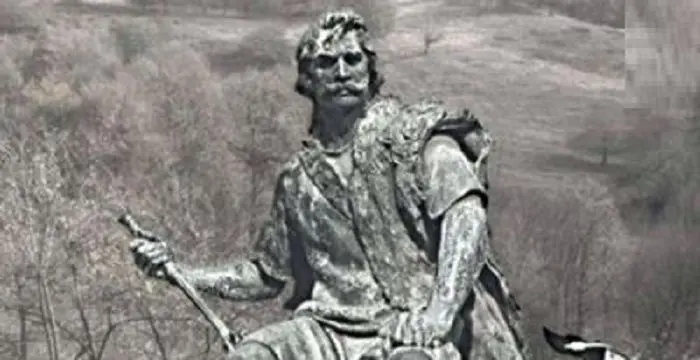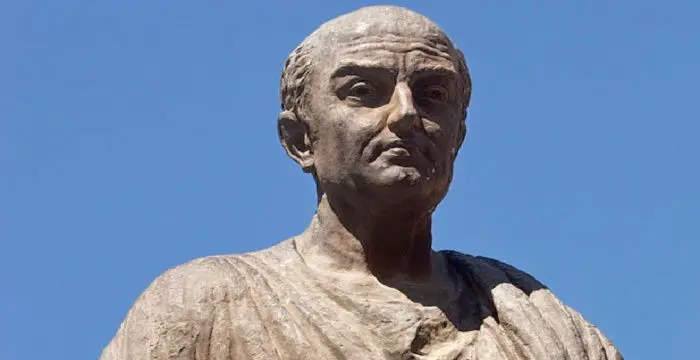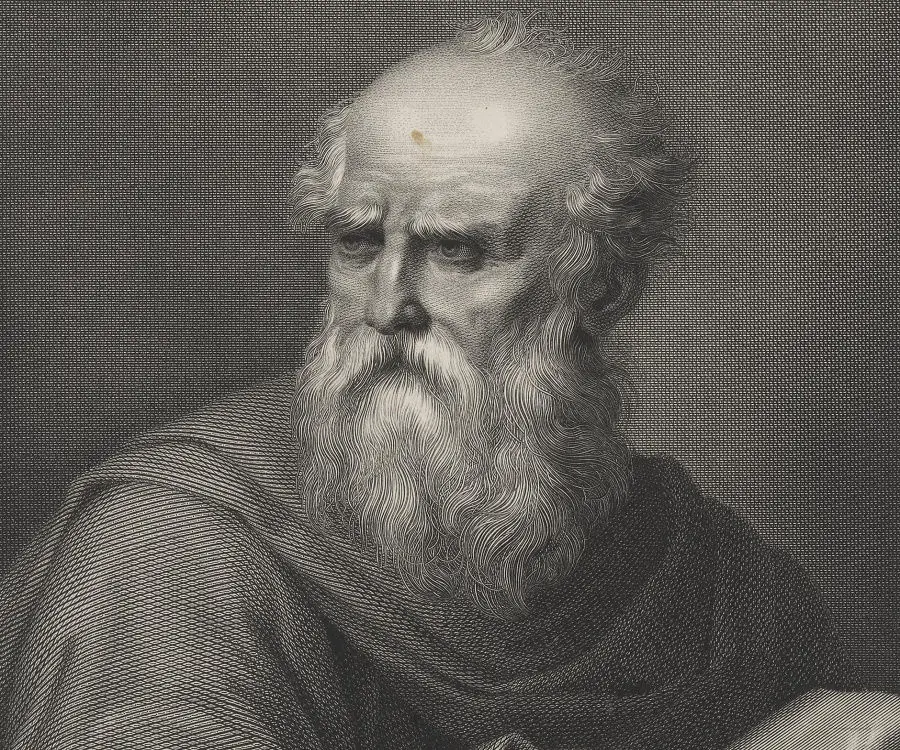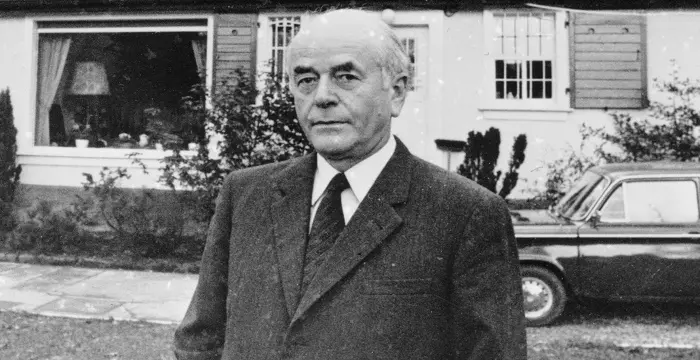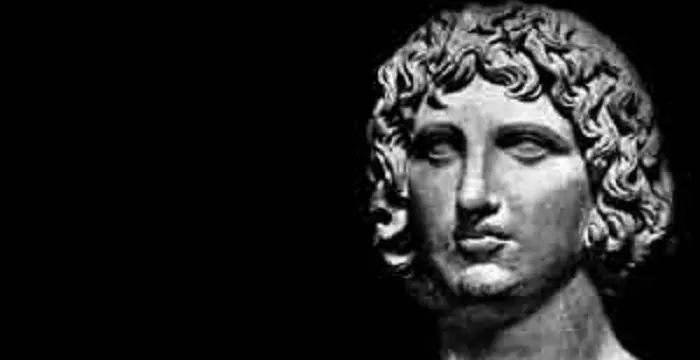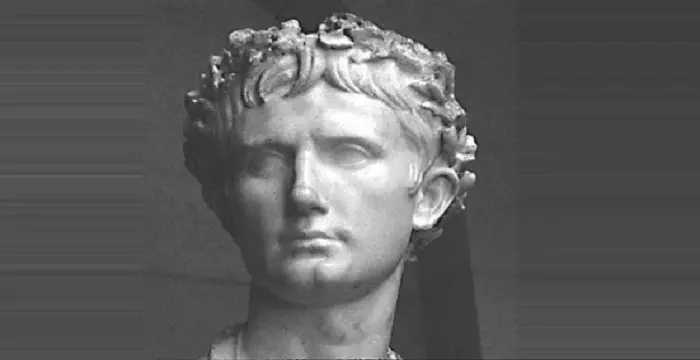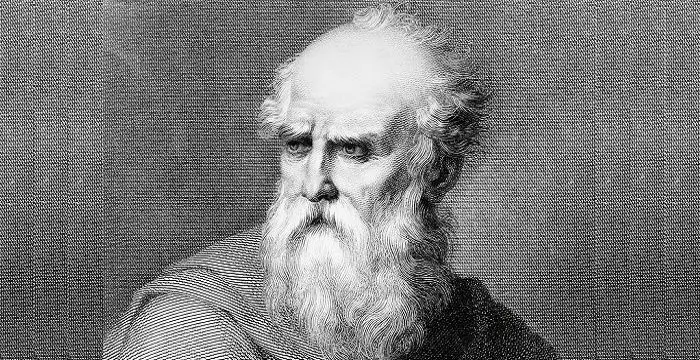
Vitruvius - Roman Architect, Family and Personal Life
Vitruvius's Personal Details
Vitruvius was a Roman architect, author, and military engineer during the 1st century BC
| Information | Detail |
|---|---|
| Birthday | 80 BC |
| Nationality | Ancient Roman |
| Famous | Architects, Ancient Roman Men, Roman Architect |
| Known as | Marcus Vitruvius Pollio |
| Birth Place | Italy, Roman Empire |
| Gender | Male |
| Born in | Italy, Roman Empire |
| Famous as | Roman Architect |
| Died at Age | 65 |
// Famous Ancient Roman Men
Flavius Odoacer
Flavius Odoacer was a soldier who went on to become the King of Italy. This biography profiles his childhood, family, life history, and timeline.
Lucius Annaeus Seneca
Lucius Annaeus Seneca, commonly known as Seneca, was a Roman philosopher and statesman. This biography profiles his childhood, life, career, works, achievements & timeline.
Commodus
Commodus (Lucius Aurelius Commodus) was a Roman emperor during the early years of the first millennium. This biography provides detailed information about his childhood, family, rule, life history, achievements, death etc.
Vitruvius's photo
Who is Vitruvius?
Marcus Vitruvius Pollio was a Roman architect, author, and civil and military engineer who lived during the 1st century BC. Known only through his ten-volume work ‘De architectura’, even his full name is in doubt; only ‘Vitruvius’ has been confirmed. The first printed edition of his work was by Fra Giovanni Sulpitius in 1486 in Rome, and the first illustrated edition was published in 1511 in Venice. His revelation about the perfect proportions in architecture and the human body helped Da Vinci make the famous Renaissance drawing of the Vitruvian Man. His famous work on architecture, which was written almost at the end of his life, has accounts of the history of ancient architecture and engineering with the author's personal experiences. It was treated as an architect's manual till the middle ages. The books reveal that architecture had a much wider scope in the 1st century as it mentions water clocks, water pumps, etc, which are not considered a part of the study of architecture today. The volumes not only talk about Greek and Roman architecture, but also deal with topics like philosophy, mathematics, and medicine. His designs for buildings were lost to the world for many centuries, till his books were re-discovered in some form during the Renaissance, which guided the European architects for many years. Vitruvius also had interests in history and travelling, and he travelled widely with the army.
Personal Life
Vitruvius is believed to have been born in c. 80–70 BC. We hardly know anything about his life, although he is mentioned in works by Pliny the Elder and Frontinus. It is certain that he was born in Italy, but we find two different towns—Fundi (now Fondi), and Verona near Venice, mentioned by historians as his birthplace.
Paul Thielscher had attempted to show that his full name was Lucius Vitruvius Mamurra, and identified him with the Mamurra who served as the chief engineer under Julius Caesar. The third century writer Faventinus established that his last name was Pollio.
In the introduction to his work ‘De Architectura’, he described in length how he is qualified to write the book. This proves that he is a man of knowledge, educated, and well read.
Despite his magnificent books, he is not regarded as an original thinker as he simply codified the existing theory and practice from the old works by Greek writers and architects.
Career
According to his own accounts, Vitruvius served as a military engineer and architect under Julius Caesar between 58 and 51 BC. He served as an artillery man in the Roman army, probably as a senior officer in charge of a number of artillery engineers, specializing in siege machinery and earthworks.
During the classical and medieval eras, military engineering, architecture and building construction were closely linked. He had the charge of providing carriages, bathhouses and tools for sawing and cutting wood, raising parapets, digging trenches, sinking wells and bringing water into the camp.
He had the responsibility of providing the troops with wood, straw, rams, onagri, balistae and other engines of war. This post was conferred on an officer with great skill and experience; hence it is believed that he held a senior post.
As an army engineer, he specialized in the construction of ballista and scorpio artillery war machines. According to some historians, he served with Caesar's chief engineer Lucius Cornelius Balbus. During his service, he travelled throughout North Africa, Hispania, Gaul (including Aquitaine) and Pontus.
From the various locations mentioned by Vitruvius, it is ascertained that he must have participated in the siege of Larignum in 56 BC. About the Gallic War, he mentioned that a massacre of the 40,000 people took place at Avaricum in 52 BC. Vercingetorix stated that the Romans did not conquer by valor, but by a kind of art and skill in assault, which the Gauls were not aware of. Different historians have mentioned many other wars during Caesar's rule, but it is not certain if Vitruvius was involved in them.
His work mentions different machines used for engineering structures like hoists, cranes and pulleys, and war machines like catapults, ballistae, and siege engines. A practising engineer, Vitruvius described the construction of sundials and water clocks, and the use of aeolipile (steam engine) as an example to prove the nature of atmospheric air movements (wind).
It is believed that after military service Vitruvius probably established himself as a professional architect, leveraging the knowledge that he had acquired during his military career. He was probably involved in various types of surveying, engineering, urban planning, and architectural design. He is known to have designed at least one significant building, which according to historians, is now destroyed. It was a basilica in the town of Fano in Italy (modern Fano in Umbria, Italy) in c. 27 BC.
In about 27 BC, he began writing the architectural treatise ‘De Architectura’. It is mentioned that in his final years Emperor Augustus, Caesar’s grandnephew, gave him a generous pension. However, it is not certain if it was granted as a fund for his books, or for the military services rendered during his reign. According to another account, after retirement from his army post he came under the patronage of Augustus’ sister, Octavia.
Renaissance mathematician Gerolamo Cardano (1501-76) had included Vitruvius in the list of the 12 most exceptional scientists. He died after c. 15 BC, but there is no evidence or record of when or where he died. This may indicate that he was not a popular personality during his own life. He must have achieved fame after his books were discovered.
Major Works
Vitruvius is best remembered as the author of ‘De Architectura,’ written between 30-20 BC, which is known today as ‘The Ten Books on Architecture.’ He gave his personal account of contemporary architecture in this work. He also sourced information from older works by Greek writers like Hermogenes of Alabanda. It seems that through ‘De Architectura’, Vitruvius tried to gain the favor of the Roman emperor Augustus as it is dedicated to him, but curiously he did not mention many of the important buildings built by Augustus.
The ancient book not only talks about buildings and machines, but also about topics like science, mathematics, geometry, astronomy, astrology, medicine, meteorology, and philosophy. Interestingly, the work describes the impact of architecture on the everyday life of the people. Vitruvius had stated that the success of architecture and engineering is based on the deep understanding of different sciences, arts, and nature.
According to Vitruvius, buildings should always be beautiful, stable and useful. ‘De Architectura’ originally had illustrations, which supported his technical descriptions. He expressed his low opinion about Roman architecture as he mentioned a small number of Roman buildings with poor design. On the other hand, he explained that Greek architecture is based upon mathematical aspects like the circle and square, which form the fundamental patterns of the cosmos.
According to him, while perfecting the art of building, the Greeks invented the three orders of architecture—Doric, Ionic and Corinthian, and they learnt the sense of proportion, which led to the understanding of the proportions of the human body. This helped Vitruvius to write about his ‘Vitruvian Man’, which later inspired Leonardo da Vinci to draw the human body inside a circle and square.
While Florentine humanist Poggio Bracciolini rediscovered ‘De architectura’ in 1414, Leon Battista Alberti publicised it in his book on architecture, ‘De re aedificatoria’ in 1450. The ruins of the Roman buildings, temples, theatres, triumphal arches and statues found in latter years were visual examples of the descriptions by Vitruvius.
// Famous Architects
Rudolf Steiner
Rudolf Steiner introduced groundbreaking ideas in realms of spirituality, art, education and agriculture. Check out this biography to know about his childhood, family life, achievements and other facts related to his life.
Zaha Hadid
The famous Iraqi-British architect Zaha Hadid is known for her designs of the ‘Rosenthal Center for Contemporary Art’ and ‘Heydar Aliyev Center’. To know more about her childhood, profile, career and timeline read on.
Albert Speer
Albert Speer was a German architect and served as a Minister for Nazi Germany during the Second World War. This biography profiles his childhood, personal life, career, relations with Hitler, subsequent capture and other facts.
Vitruvius biography timelines
- // 56 BC To 52 BCFrom the various locations mentioned by Vitruvius, it is ascertained that he must have participated in the siege of Larignum in 56 BC. About the Gallic War, he mentioned that a massacre of the 40,000 people took place at Avaricum in 52 BC. Vercingetorix stated that the Romans did not conquer by valor, but by a kind of art and skill in assault, which the Gauls were not aware of. Different historians have mentioned many other wars during Caesar's rule, but it is not certain if Vitruvius was involved in them.
- // 27 BCIn about 27 BC, he began writing the architectural treatise ‘De Architectura’. It is mentioned that in his final years Emperor Augustus, Caesar’s grandnephew, gave him a generous pension. However, it is not certain if it was granted as a fund for his books, or for the military services rendered during his reign. According to another account, after retirement from his army post he came under the patronage of Augustus’ sister, Octavia.
- // 20 To 30 BCVitruvius is best remembered as the author of ‘De Architectura,’ written between 30-20 BC, which is known today as ‘The Ten Books on Architecture.’ He gave his personal account of contemporary architecture in this work. He also sourced information from older works by Greek writers like Hermogenes of Alabanda. It seems that through ‘De Architectura’, Vitruvius tried to gain the favor of the Roman emperor Augustus as it is dedicated to him, but curiously he did not mention many of the important buildings built by Augustus.
- // 51 To 58 BCAccording to his own accounts, Vitruvius served as a military engineer and architect under Julius Caesar between 58 and 51 BC. He served as an artillery man in the Roman army, probably as a senior officer in charge of a number of artillery engineers, specializing in siege machinery and earthworks.
- // 70 To 80 BCVitruvius is believed to have been born in c. 80–70 BC. We hardly know anything about his life, although he is mentioned in works by Pliny the Elder and Frontinus. It is certain that he was born in Italy, but we find two different towns—Fundi (now Fondi), and Verona near Venice, mentioned by historians as his birthplace.
- // 1414 To 1450While Florentine humanist Poggio Bracciolini rediscovered ‘De architectura’ in 1414, Leon Battista Alberti publicised it in his book on architecture, ‘De re aedificatoria’ in 1450. The ruins of the Roman buildings, temples, theatres, triumphal arches and statues found in latter years were visual examples of the descriptions by Vitruvius.
- // 1501 To 1576Renaissance mathematician Gerolamo Cardano (1501-76) had included Vitruvius in the list of the 12 most exceptional scientists. He died after c. 15 BC, but there is no evidence or record of when or where he died. This may indicate that he was not a popular personality during his own life. He must have achieved fame after his books were discovered.
// Famous Ancient Roman peoples
Virgil
Virgil was a well-known ancient Roman poet of the Augustan period. Check out this biography to know about his childhood, family life, achievements and other facts related to his life.
Horace
Horace was an ancient Roman poet who was one of the leading poets of Augustan Age. Read more about the life and the works of this poet in the following article.
Flavius Odoacer
Flavius Odoacer was a soldier who went on to become the King of Italy. This biography profiles his childhood, family, life history, and timeline.
Lucius Annaeus Seneca
Lucius Annaeus Seneca, commonly known as Seneca, was a Roman philosopher and statesman. This biography profiles his childhood, life, career, works, achievements & timeline.
Commodus
Commodus (Lucius Aurelius Commodus) was a Roman emperor during the early years of the first millennium. This biography provides detailed information about his childhood, family, rule, life history, achievements, death etc.
Jesus Christ
Jesus Christ was the founder of Christianity, declared to be the Son of God in New Testament. This biography of Jesus Christ provides detailed information about his childhood, life, achievements, works & timeline
Vitruvius's FAQ
When was Vitruvius died?
Vitruvius was died at 2020-04-14
Which age was Vitruvius died?
Vitruvius was died at age 65
Where is Vitruvius's birth place?
Vitruvius was born in Italy, Roman Empire
What is Vitruvius nationalities?
Vitruvius's nationalities is Ancient Roman
How famous is Vitruvius?
Vitruvius is famouse as Roman Architect
